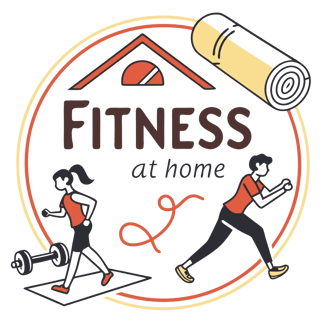5 Common Mistakes Beginners Make When Exercising at Home
Discover the top 5 mistakes beginners make when exercising at home and learn how to avoid them. Get actionable tips for a safe and effective workout routine
1/8/20253 min read


Starting a fitness journey at home is a fantastic way to improve your health and well-being. It’s convenient, cost-effective, and adaptable to your schedule. However, many beginners make mistakes that can hinder progress or even lead to injury. Understanding these pitfalls is crucial to making the most of your workouts. Here are five common mistakes beginners make when exercising at home — and how to avoid them.
1. Skipping Warm-Ups and Cool-Downs
Many beginners dive straight into their workouts, eager to burn calories or build muscle. However, skipping warm-ups and cool-downs can increase the risk of injury and delay recovery.
Why It’s a Problem:
Warm-ups prepare your body for physical activity by increasing blood flow and loosening up muscles. Cool-downs, on the other hand, help reduce muscle stiffness and gradually lower your heart rate.
Solution:
Spend 5-10 minutes on a dynamic warm-up before your workout. Examples include arm circles, high knees, and light jogging in place. After your workout, dedicate another 5-10 minutes to static stretching, focusing on the major muscle groups you used.
2. Using Improper Form
Without proper guidance, it’s easy to perform exercises incorrectly. Poor form not only reduces the effectiveness of your workout but can also lead to injuries over time.
Why It’s a Problem:
Improper form places undue stress on your joints and muscles, increasing the likelihood of strains or sprains. For example, incorrect squatting technique can strain your knees and lower back.
Solution:
Take the time to learn correct form. Watch instructional videos from certified trainers or use apps with guided demonstrations. Start with simple movements and progress gradually as you become more confident. Consider investing in a mirror to check your posture during workouts.
3. Overtraining Without Rest Days
Enthusiasm is great, but working out too frequently without adequate rest can backfire.
Why It’s a Problem:
Overtraining leads to fatigue, decreased performance, and a higher risk of injury. Your muscles need time to repair and grow stronger after each workout.
Solution:
Schedule at least one or two rest days per week. On these days, focus on light activities like walking or yoga to stay active without overloading your body. Pay attention to how your body feels and adjust your workout intensity if needed.
4. Neglecting a Balanced Workout Routine
Focusing only on certain exercises, such as cardio or strength training, can create muscular imbalances and limit overall fitness progress.
Why It’s a Problem:
A lopsided routine neglects key aspects of fitness, such as flexibility, core strength, or endurance. For example, doing only push-ups and neglecting lower body exercises can lead to strength imbalances.
Solution:
Incorporate a mix of cardio, strength, flexibility, and balance exercises into your routine. For instance, pair bodyweight squats and push-ups with yoga poses like downward dog to cover multiple fitness domains. Aim for variety to keep your workouts engaging and effective.
5. Lack of Consistency and Goal Setting
It’s easy to lose motivation when you don’t see immediate results or have a clear plan.
Why It’s a Problem:
Inconsistent workouts and vague goals can stall progress and make it harder to stick with your fitness routine over time.
Solution:
Set realistic, measurable goals. For example, aim to complete three 30-minute workouts per week or increase your plank hold time by 10 seconds each week. Use a fitness tracker or journal to monitor your progress and celebrate small victories along the way.
FAQs About Exercising at Home
Q: How often should I work out at home as a beginner?
A: Start with 3-4 sessions per week, allowing rest days in between. Gradually increase frequency as your fitness level improves.
Q: Do I need equipment to exercise at home?
A: Not necessarily. Bodyweight exercises like squats, lunges, and push-ups are highly effective. Resistance bands or dumbbells can add variety and challenge as you progress.
Q: How do I stay motivated to work out at home?
A: Set specific goals, create a dedicated workout space, and follow a structured routine. Joining online fitness communities or using apps can also provide accountability and encouragement.
Conclusion
Avoiding these common mistakes can help you build a safe, effective, and sustainable home workout routine. By warming up, focusing on proper form, allowing for rest, diversifying your exercises, and staying consistent, you’ll be well on your way to achieving your fitness goals. Ready to get started? Check out our beginner-friendly home workout plans and take the first step toward a healthier, stronger you!
Fitness at Home
As an Amazon Associate, I earn from qualifying purchases. This means that if you click on an Amazon link and make a purchase, I may receive a small commission at no extra cost to you
© 2024. All rights reserved.
Achieve your fitness goals from home easily
